and the distribution of digital products.
How Cognitive Biases Impact AI Adoption: What Every Business Leader Should Know
In today's rapidly evolving business world, staying ahead of the game often means embracing the latest technologies. However, just like the Luddites resisted industrial mechanization, fear and misunderstanding can hinder our decision-making.
\ Consider this scenario: Paul, a business owner, recognizes the potential of AI to transform his operations but continues to delay its implementation. He convinces himself that it's not the right time and that his current methods are sufficient.
\ Despite experiencing stagnant growth for years, Paul rationalizes his decision by saying, “he will wait for others in his industry to adopt AI first.”
\
While this may seem like a logical approach, it could ultimately hold back his business's potential for innovation and progress.
\
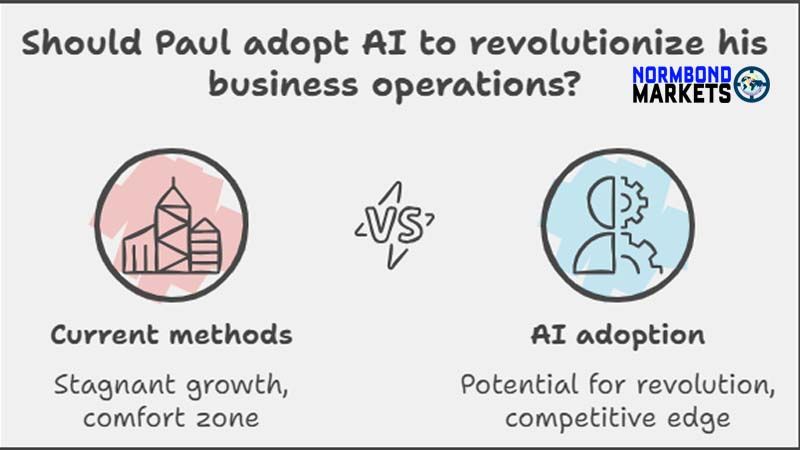
\ Charles Thomas Munger, a relatively unknown figure to many, lived a long life up to the age of 99 before passing away in Santa Barbara, California on November 28, 2023.
\ At the time of his death, he was estimated to have a net worth of $2.6 billion, earning him the title of the 1,182nd richest person in the world according to Forbes.
\ Munger was a renowned investor. He was also a close friend and business partner of Warren Buffett at Berkshire Hathaway. The conglomerate reported an annual revenue of $364.5 billion in 2023.
https://www.youtube.com/watch?v=uHmyko0Qj0Q&embedable=true
“I wanted to get rich so I could be independent. So I could do other things like give talks on the intersection of psychology and economics.” — Charlie Munger
\ A few years ago, one of my mentors introduced me to Charlie Munger. He did this by sharing a piece Charlie penned titled, “The Psychology of Human Misjudgment.” In it, he outlined 25 cognitive biases that hindered wise investing decisions. Charlie referred to them as a guide for business and life.
\ As a digital marketer, I connected deeply with Charlie’s insights. You see, I’ve always been curious about what motivates people, and their behavior in different situations. I was a “cool hunter” back in the nineties. Spotting trends early and adapting them to impact marketing and sales in industries like fashion and entertainment.
\ For the past few years, I have been deep into Generative AI, Machine Learning, and their impact on digital marketing and how we all live, work, and play. I’ve engaged with a range of entrepreneurs, professionals, and business executives on adopting AI to grow their businesses. I even published a book, “Future-Proof Your Business” to help professionals tap into the power of these cutting-edge technologies.
\
Studies show that up to 95% of our decisions are made subconsciously. Are you truly in control, or are hidden biases pulling the strings?
\ My research led me to reflect on cognitive biases. What if these biases limit the ability of entrepreneurs and business pros to adopt tech tools like AI?
\ I segmented the biases into four categories. Motivational, emotional, cognitive, and social. This new mental insight could be the first step to help business leaders make better-informed decisions about AI adoption and implementation.
\ My initial experiments were eye-popping. I decided to dig deeper.
\ Keep reading to see the results.
Motivational Biases
\ Choices are driven by our deepest wants and needs.
\ They pull us towards things that make us feel good or help us avoid pain.
\ When it comes to using AI, people might be excited about the potential benefits, like saving money or being more efficient.
\ But sometimes, these feelings can lead us to make decisions too soon or push back against changes that are necessary.
\
In business leaders need to find a middle ground. This means thinking about the long-term value of AI. While also and being aware of the risks of rushing into it.
\ BIAS 1: Reward/Punishment Super-Response Tendency
- How it Affects AI Adoption: People are more likely to adopt AI if they are rewarded for doing so (e.g., increased efficiency, cost savings) or if they fear punishment for not doing so (e.g., falling behind competitors).
\
- Why it Matters: This bias can lead to hasty adoption without proper consideration or to resistance to change due to fear of negative consequences.
\
Overcoming it: Leaders should focus on highlighting the long-term benefits of AI while addressing concerns and providing support during the transition.
\
BIAS 2: Deprival-Super Reaction Tendency
- How it Affects AI Adoption: People react strongly to perceived losses or threats. This can lead to resistance to AI adoption if it’s seen as taking away jobs or control.
\
- Why it Matters: This bias can create fear and resistance to change.
\
Overcoming it: Leaders should address concerns, showcase positive impacts on jobs and society, and involve employees in the adoption process.
\
BIAS 3: Reciprocation Tendency
- How it Affects AI Adoption: People tend to feel obligated to return favors. This can be leveraged to encourage AI adoption by offering incentives or demonstrating how AI can help others.
\
- Why it Matters: This bias can be used to create positive associations and build support for AI initiatives.
\
Overcoming it: Leaders should offer genuine help and support, highlight mutual benefits, and create a sense of shared responsibility.
\
BIAS 4: Use-it-or-Lose-It Tendency
- How it Affects AI Adoption: Skills and knowledge fade if not used. Fear of losing existing skills can lead to AI resistance, while over-reliance on AI could cause complacency.
\
- Why it Matters: This bias can create skill gaps or lead to complacency.
\
- Overcoming it: Leaders should emphasize continuous learning, provide opportunities for upskilling, and encourage a balance between human and AI capabilities.

\n
When it comes to AI, decision-makers need to be on their toes about emotional biases. These prejudices can come from feelings, preferences or even dislikes. They often stem from trust, fear or personal experiences.
\
Instead of making decisions based on facts, people tend to let their feelings get in the way when it comes to AI adoption.
\ To deal with these prejudgements, focus on building trust. Talk about fears. Then show how AI can be a good thing for both people and companies.
\ This strategy ensures that decisions about AI are made with reason and strategy, not just based on emotions.
\ BIAS 5: Liking/Loving Tendency
- How it Affects AI Adoption: People are more likely to adopt AI if they like or trust the people promoting it or if they see it as aligning with their values.
\
- Why it Matters: This bias can lead to adopting AI based on personal relationships rather than objective evaluation. On the flip side, it can lead to rejecting AI due to negative associations.
\
- Overcoming it: Leaders should build trust and rapport. It’s important to showcase positive use cases, and address concerns transparently.
\ BIAS 6: Disliking/Hating Tendency
- How it Affects AI Adoption: People are less likely to adopt AI if they dislike or distrust the people promoting it. This can also happen if they see AI as a threat to their jobs or values.
\
- Why it Matters: This bias can lead to irrational rejection of AI or to active resistance based on negative emotions.
\
- Overcoming it: Business execs should address concerns openly. Showcase the positive impact on jobs and society. Be sure to involve employees in the adoption process.
\ BIAS 7: Curiosity Tendency
- How it Affects AI Adoption: People are naturally curious and drawn to new things. This can lead to exploring AI and its potential benefits.
\
- Why it Matters: This bias can be leveraged to encourage experimentation and innovation.
\
- Overcoming it: Leaders should foster a culture of curiosity. Provide opportunities for learning, and showcase the possibilities of AI.
\ BIAS 8: Envy/Jealousy Tendency
- How it Affects AI Adoption: People may feel envious or jealous of others who are benefiting from AI or fear being left behind.
\
- Why it Matters: This bias can lead to unhealthy competition or resistance to AI adoption.
\
- Overcoming it: Business leaders should foster a collaborative environment. Emphasize shared goals. Showcase how AI can benefit everyone.
\ BIAS 9: Stress-Influence Tendency
- How it Affects AI Adoption: Stress can impair decision-making. It often leads to impulsive choices or avoidance. This can affect AI adoption decisions.
\
- Why it Matters: Stress can hinder rational evaluation and lead to less-than-optimal choices.
\
- Overcoming it: Top management should create a supportive environment. Provide resources to manage stress and mental health. Encourage thoughtful decision-making.
\ BIAS 10: Simple, Pain-Avoiding Psychological Denial
- How it Affects AI Adoption: People may deny the potential impact of AI or downplay its risks to avoid facing uncomfortable truths.
\
- Why it Matters: This bias can lead to complacency and not being prepared for the changes AI may bring.
\
- Overcoming it: Leaders should promote open dialogue, address concerns, and encourage proactive planning for the future.
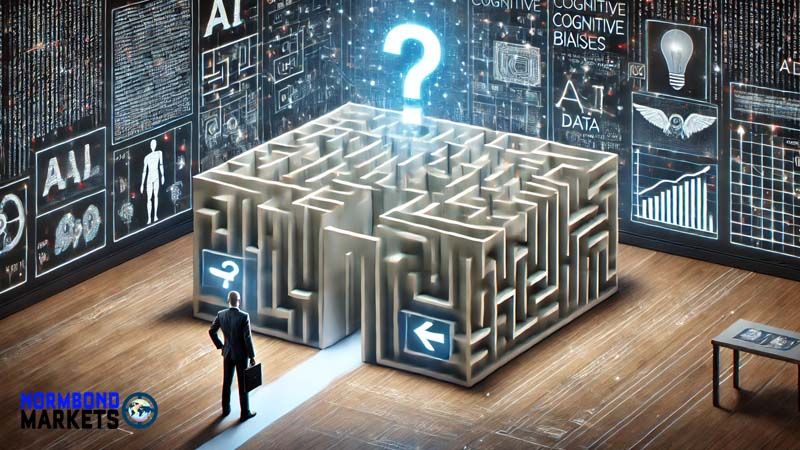
\ Our brains can trick us into thinking funny things about AI. It can make us too scared or too excited about it. You might even see things that aren’t there.
\ How do we get around these tricks?
\
We need to talk clearly. Learn about AI and try it out personally in a safe space.
\ As a business leader you must help your team make good choices and decisions about AI tech. Understand these twists and share the info.
\ BIAS 11: Doubt-Avoidance Tendency
- How it Affects AI Adoption: People tend to avoid uncertainty and seek quick solutions. This can lead to adopting AI without proper due diligence. It can also lead to resisting AI simply because it’s new and unfamiliar.
\
- Why it Matters: This bias can lead to impulsive decisions or missed opportunities.
\
- Overcoming it: Business leaders should provide clear information. You need to be prepared to address uncertainties. Provide resources and offer opportunities for experimentation and learning.
\ BIAS 12: Inconsistency-Avoidance Tendency
- How it Affects AI Adoption: People resist changing their minds or behaviors. This can lead to sticking with familiar processes even if AI offers better solutions. It can also lead to rejecting AI because it requires change.
\
- Why it Matters: This bias can hinder innovation. The comfort zone can prevent organizations from adapting to new technologies.
\
- Overcoming it: Leaders should emphasize the benefits of change. Provide support during the transition. Wall the talk and celebrate AI successes.
\ BIAS 13: Excessive Self-Regard Tendency
- How it Affects AI Adoption: People may overestimate their own abilities and underestimate the potential of AI. This can lead to resistance to adopting AI or to overconfidence in using it.
\
- Why it Matters: This bias can hinder learning and lead to mistakes in AI implementation.
\
- Overcoming it: Top execs should foster a culture of humility and continuous learning. Provide AI training and support. Be sure to encourage realistic expectations.
\ BIAS 14: Over-Optimism Tendency
- How it Affects AI Adoption: People may be overly optimistic about the potential benefits of AI and underestimate its challenges. This can lead to unrealistic expectations and disappointment.
\
- Why it Matters: This bias can lead to over-investment or hasty adoption without proper planning.
\
- Overcoming it: Leaders should set realistic goals. Don’t just rely on hype. Communicate potential challenges. Start with pilot programs. Focus on incremental progress.
\ BIAS 15: Availability-Misweighing Tendency
- How it Affects AI Adoption: People tend to rely on conveniently available information. This data can be influenced by recent events or unreliable sources. It can lead to overestimating or underestimating the risks and benefits of AI.
\
- Why it Matters: This bias can create skewed perceptions and hinder objective evaluation.
\
- Overcoming it: Leaders should provide balanced information. Encourage critical thinking and seek diverse perspectives.
\ BIAS 16: Senescence-Misinfluence Tendency
- How it Affects AI Adoption: Cognitive decline with age can affect decision-making and openness to new technologies. This can create challenges in AI adoption for older individuals or in organizations with an aging workforce.
\
- Why it Matters: This bias can lead to resistance to change or difficulty in adapting to new ways of working.
\
- Overcoming it: Leaders should provide additional support and training for older employees. Emphasize the benefits of AI for all age groups. Seek to create a culture that values experience and wisdom along with innovation.
\ BIAS 17: Drug-Misinfluence Tendency
- How it Affects AI Adoption: This bias isn’t directly related to the tech itself but substance abuse can significantly impair judgment. Decision-making and overall cognitive function can also suffer. This can lead to poor choices regarding AI adoption.
\
- Why it Matters: Substance abuse can have devastating consequences. Individuals and the organizations they work can struggle. When it comes to AI adoption, clouded judgment can be costly. Imagine missed opportunities, financial losses and reputational damage.
\
- Overcoming it: Prioritize the well-being of employees. Promote a healthy and supportive work environment. Ensure that decisions are made with clear minds and sound judgment. This benefits the individuals and the organization.
\ BIAS 18: Authority-Misinfluence Tendency
- How it Affects AI Adoption: People tend to defer to authority figures or experts. This can lead to adopting AI because it’s recommended by respected leaders or to resisting it if authorities express concerns.
\
- Why it Matters: This bias can influence adoption decisions based on perceived credibility rather than objective evaluation.
\
- Overcoming it: Leaders should provide balanced information from diverse sources. Encourage critical thinking. Empower individuals to make informed decisions.
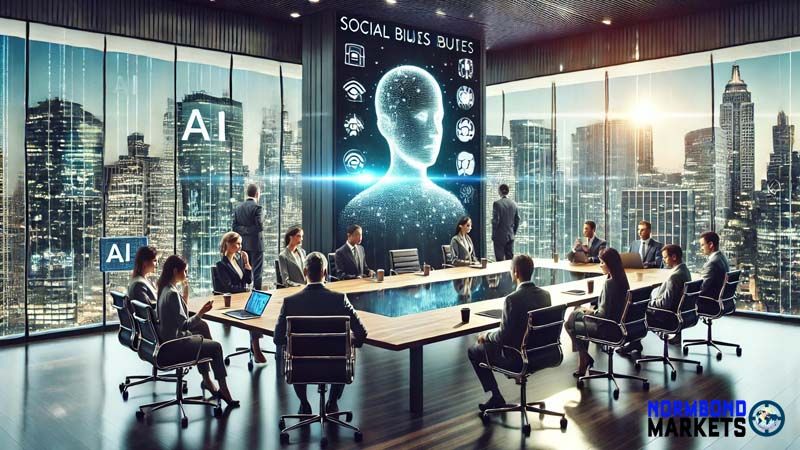
\ AI adoption is heavily influenced by what’s popular, trending and click-worthy in society.
\
People tend to follow the crowd. Often they do what their peers or respected leaders are doing, instead of thinking for themselves.
\ Business leaders can take advantage of this tendency.
\ You can do this by showing off how great AI is and creating a friendly and inviting environment for people to try it out.
\ BIAS 19: Social-Proof Tendency
- How it Affects AI Adoption: People are influenced by the actions of others. This can lead to adopting AI if others are doing so or to resisting it if others are hesitant.
\
- Why it Matters: This bias can create momentum or inertia around AI adoption.
\
- Overcoming it: Take advantage of social networks and forums.Leaders should highlight successful AI implementations. Be sure to encourage peer-to-peer learning.
\ BIAS 20: Influence-From-Mere Association Tendency
- How it Affects AI Adoption: People are influenced by positive or negative associations with AI. This can lead to adopting AI because it’s seen as “cool” or “modern.” It can also mean rejecting AI because it’s associated with negative portrayals in media.
\
- Why it Matters: This bias can create hype or fear around AI. It can have a powerful influence on adoption decisions.
\
- Overcoming it: Leaders should focus on showcasing real-world applications and benefits of AI. Be prepared to address concerns and promote positive narratives.
\ BIAS 21: Contrast-Misreaction Tendency
- How it Affects AI Adoption: Individuals’ attitudes toward AI are shaped by how they compare it to existing technology or past experiences. Seeing AI as superior can drive its adoption, whereas unfavorable comparisons may lead to rejection.
\
- Why it Matters: This bias can create unrealistic expectations or lead to undervaluing the potential of AI.
\
- Overcoming it: Business execs should focus on the unique benefits of AI. Be sure to set realistic expectations. Avoid comparisons that create undue pressure on your team.
\ BIAS 22: Twaddle Tendency
- How it Affects AI Adoption: Engaging in idle chatter or focusing on trivial details can block meaningful conversations about AI.
\
- Why it Matters: This bias can waste time and prevent meaningful progress in AI adoption initiatives.
\
- Overcoming it: Leaders should set clear agendas. Focus on key AI objectives. Encourage concise and relevant communication.
\ BIAS 23: Reason-Respecting Tendency
- How it Affects AI Adoption: People are more likely to be persuaded by logical arguments and evidence. This tendency can be leveraged to promote AI adoption by highlighting its benefits and addressing concerns with rational, evidence-based discussions.
\
- Why it Matters: This bias can be used to build a strong case for AI and gain support for its implementation.
\
- Overcoming it: Leaders should provide clear and compelling evidence. Address concerns logically and avoid emotional appeals or hype.
\ BIAS 24: Kantian Fairness Tendency
- How it Affects AI Adoption: People expect fairness and impartiality in AI systems. They want to be treated equally by the technology, with no bias or discrimination.
\
- Why it Matters: This bias can lead to concerns about AI bias and discrimination.
\
- Overcoming it: Leaders should prioritize fairness and transparency in AI development and use. It’s important to address concerns about bias. Be focused and implement measures to ensure ethical AI practices.
\ BIAS 25: Lollapalooza Tendency
- How it Affects AI Adoption: The combination of multiple biases can amplify their effects. This can result in extreme behaviors or decisions regarding AI adoption.
\
- Why it Matters: This tendency highlights the importance of recognizing and addressing multiple biases simultaneously to avoid irrational decision-making.
\
- Overcoming it: Leaders should be aware of the co-mingling of various biases. Encourage diverse perspectives. Be sure to promote thoughtful and balanced decision-making processes.
\
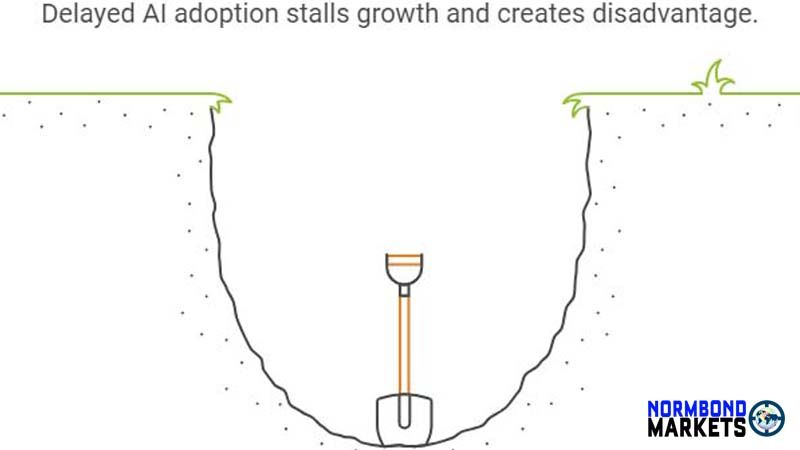
Understanding these biases is crucial for entrepreneurs, professionals and founders navigating the complexities of AI adoption.
\ Practicing a more thoughtful approach ensures that decisions are based on sound reasoning rather than unconscious biases.
\
By recognizing how these psychological tendencies influence your choices, you can avoid common pitfalls.
\ Need to to dive deeper into how you can future-proof your business with the right AI strategies, tools, and mindset? Be sure to check out my book, “Future Proof Your Business.” It’s packed with actionable insights. Entrepreneurs and business leaders can learn how to successfully leverage AI, navigate market disruptions and achieve sustainable growth.
\
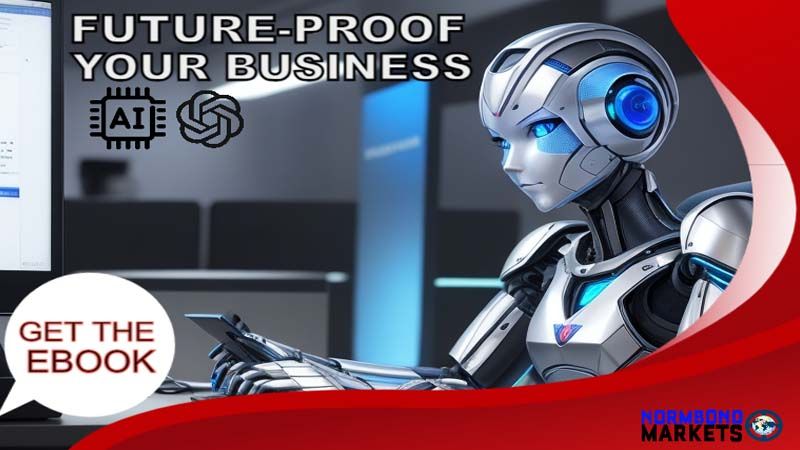
\ Ready to take your business to the next level? Let’s connect.
\
- Home
- About Us
- Write For Us / Submit Content
- Advertising And Affiliates
- Feeds And Syndication
- Contact Us
- Login
- Privacy
All Rights Reserved. Copyright , Central Coast Communications, Inc.